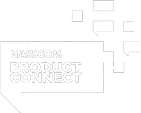Gagne researched and laid out a nine-step process naming the events of instruction which correlated the conditions and addressed the learning issues at various stages of learning. Embibe is very much inspired by multiple researchers working on the methodology of learning and unlearning.
This model addresses the mental conditions for learning and thereby, ensures effective learning. According to this model, there are nine sequential events, each managing communication that supports the learning process. Gagne’s Nine Events of Instruction is often used as a framework to develop strategies and create activities for instructional classes.
The nine events of instruction, according to Gagne, are:
- Gaining Attention of the Student – Reception: The first step is to gain the attention of the learners – get them ready to learn by providing stimuli, thought-provoking questions, novelty, and ice breaker activity.
- Informing the Learner of the Objective – Expectancy: In the second step, experts and faculties chalk out the plan about the sessions and the assessments in the course of completion.
- Stimulating Recall of Prerequisite Learning – Retrieval: This can also be called the essential revision stop where the faculties, the experts, and the working team help the students relate the material provided with the previously acquired knowledge and linking towards the focused goals at the same time.
- Presenting the Stimulus Material – Selective Perception: In this step, experts provide the students with the best materials that match their level and their ultimate goal in life.
- Providing Learning Guidance – Semantic Encoding: In this stage, experts and faculties reading the abilities of various students chalk out a plan facilitating learning and necessary support needed in accordance with their goals and needs. The innovative learning process is aided with guided mechanisms like case studies and conceptual study of various theories.
- Eliciting the Performance – Responding: After the initial stages of letting the students get going, teachers step up and provide students with questions, quizzes, assignments, and mock tests making them more robust and getting them a deep understanding of the newly acquired knowledge and skills.
- Providing Feedback – Reinforcement: Once the initial stages of learning are complete and the boost-up packs are added to the students’ schedule of knowledge and understanding, teachers move on to the feedback mechanism. Here, experts discuss the shortcomings and the strength of the student, making it more comfortable and better for the student to excel.
- Assessing the Performance – Retrieval: Once the entire cycle of understanding, upgrading, and mechanism of feedback pass by, experts and faculties move on to making the fillers and helping them get ahead by excelling towards their goal. This also allows the faculties and the instructors to assess the progress as per the requirement.
- Enhancing Retention and Transfer – Generalization: Here, experts provide enhanced resources and help students self-assess conceptual understanding with real-life scenarios. Students in this position are equipped with multiple resources that allow them to transfer and co-relate the real-world concepts with the book theories.
Embibe Product/Features: Embibe Explainers, Practice, Test
Embibe decodes the whole theory and the steps with the three basic structures of learn-unlearn, practice-test, and achievements. Every video of Embibe works on these nine events starting with a hook to gain the students’ attention, then provides the objective of videos with a little understanding about prerequisite concepts. In-depth 3D visual learning material provides the best stimulus to learn the concepts after gaining students’ attention. Adaptive practice enables students to practice at their own pace and level of proficiency. Personalised assessments give a granular analysis of a student’s weak topics, topics they got right, topics they have mastered. This feedback helps a student to reinforce the weak concepts and helps in removing the learning gaps.

























